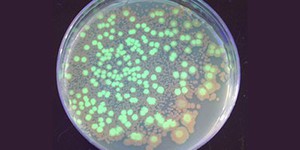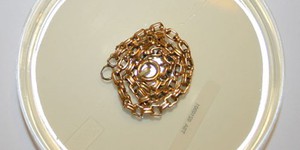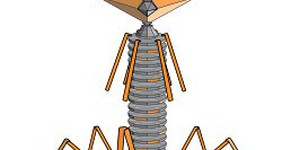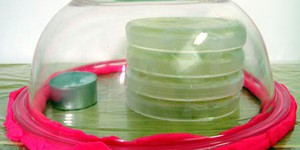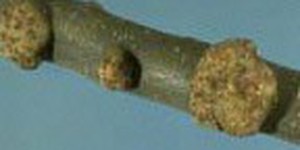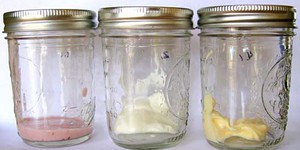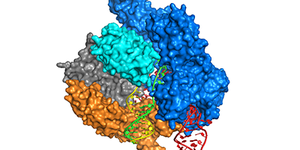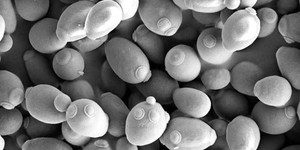Others Like “How Do Food Preservatives Affect the Growth of Microorganisms?” (top 20 results)
|
Have you ever heard or read about GMO?
GMO stands for
genetically modified
organisms.
Scientists can deliberately modify the DNA of organisms, such as bacteria or plants, to change their properties for a specific purpose. For example, crops can be modified to become more drought- or pest-resistant. Genetic engineering is a very powerful tool in biotechnology that has already found many different applications in agriculture, medicine, and industry. In this project, you will engineer a…
Read more
Have you ever wondered if a piece of jewelry is real gold or if it's just some ordinary metal alloy? It turns out that some metals have a unique property; even in small amounts, they can be toxic to some organisms, including algae, molds, fungi, and bacteria, although it often takes many hours to see an effect. Can this phenomena, called the oligodynamic effect be used to tell whether or not the gold or silver in a piece of jewelry is real? Do bacteria react differently to pure, plated, and…
Read more
Though the Sun provides heat and light, which are essential for life on Earth, ultraviolet (UV) rays in sunlight can cause damage to DNA. In this science fair project, you will experiment with a strain of yeast that is super-sensitive to UV light. This project will demonstrate the lethal effects of UV light when DNA damage is not repaired.
Read more
Have you ever thought about how fortunate you are to have safe and clean water coming out of your faucet? Many people in undeveloped nations don't have this luxury. But does that mean they can't have clean water at all? Is there an inexpensive way they could use to make their own clean water? In this microbiology science fair project, you will investigate whether or not sunlight can disinfect contaminated water.
Read more
Most people are not aware that the soil around them is a battle scene. The combatants are very small—bacteria on one side and bacteriophage on the other. The bacteriophage (or phage for short) try to pierce the outer coats of the bacteria and inject them with phage DNA. If successful, the DNA will take over the inner machinery of the bacterial cells and force them to make many copies of the phage. After the copies are made, the bacterial cells break apart, releasing new phage that start…
Read more
Have you ever noticed that most yogurt containers say they contain "live cultures"? What does that mean? The label is suggesting that the yogurt has living bacteria in it! While some types of bacteria can make you sick, some are actually important to keep you healthy. But individual bacteria are so tiny that you cannot see one with the naked eye, so how can you tell if bacteria are really living in your yogurt? In this science fair project, you will investigate whether yogurt actually…
Read more
Crown gall is a plant disease caused by the soil bacterium Agrobacterium tumefaciens. This project uses tomato plants to investigate whether garlic extract can prevent crown gall infection.
Read more
Have you ever wondered how yogurt is made and what makes some yogurts different from other yogurts? You may have noticed that most yogurt containers advertise that the yogurt contains "live cultures." This means that there are living bacteria in the yogurt! These amazing bacteria can turn plain old milk into a yummy yogurt treat. In this science project, you will investigate whether the bacteria affect what the yogurt feels, tastes, and smells like by making your own yogurt at home!
Read more
Many scientists are currently very excited about CRISPR, as it has the potential to revolutionize gene editing. But what exactly is CRISPR and what does it do? CRISPR is a novel tool in gene editing that allows the modification of genetic DNA at specific target sites in many different organisms. Researchers have high hopes that this technology can, one day, cure genetic diseases, as mutated DNA sequences can easily be corrected. In this project, you will use CRISPR to mutate a DNA sequence…
Read more
Can you imagine a glowing loaf of bread? You might not be able to make the whole loaf glow, but you can get baker's yeast to fluoresce! The way to do this is to modify the genetic information of the yeast organism. The technology that is used to do this is called genetic engineering. With genetic engineering, you can insert a fluorescent protein gene from a jellyfish into yeast cells, so they start glowing under blue light! Do this project to see for yourself!
Read more
|
Explore Our Science Videos
How Do Viruses React To Soap?
How Far Will It Fly? Explore Drag with Paper Airplanes
Solar Panel Angle for the Junior Solar Sprint


